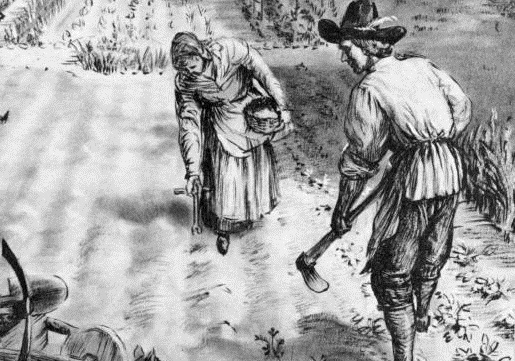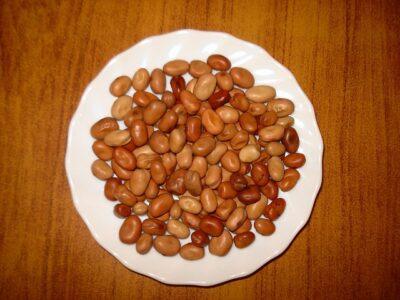No matter how small a person’s yard was during the 1700s, there always was a need to plant at least some vegetables to help feed the family. Grocery stores were virtually unheard of, and seedlings or even packaged seed were not available until much later.
This is why almost everyone had some sort of vegetable garden outside the kitchen or back door. The family ate most of it, of course, the extras were canned or dried, and if you were fortunate, you had still more that you could sell at the market.
In the 1700s, almost everyone used seeds from the previous year — heirloom seeds — which were passed down from generation to generation, or seeds were sometimes traded within the community. Many seeds planted in “the new world” came from the native people who lived there.
This is why most gardens contained plants that gave you the most bang for your basket, if you will. High-yield plants that took little space were highly prized, although some people planted their favorites because, let’s face it, no one wants to eat squash all year long.
What kind of plants would you expect to find in an 18th century garden? Frankly, I was a bit shocked. I was certain I would see tomatoes and sweet strawberries, but I was mistaken.
Need Non-GMO Heirloom Seeds? Get Them From A Company You Can Trust! [2]
Let’s look at the top 10 plants that were commonly found in an 18th century garden,
1. Cardoon
These are related to the artichoke, but are not nearly as common today. Cardoon is native to Europe and was said to have been brought to the Americas by the Quakers. I must admit that this is a vegetable I’ve never even heard of. Speaking of artichoke …
2. Artichokes
I never imagined this one! But did you know that Thomas Jefferson loved them and grew a great many in his own gardens? Artichokes have been cultivated since at least the 1500s, but I never imagined them in the everyday garden.
3. Fava beans
I was certain that green beans would have been a favorite, but fava beans, sometimes called broad beans, beat out green beans by a mile. These were popular right into the 19th century. The most popular variety was Broad Windsor. Fava bean seeds are hard to find in today’s world, but they were an 18th century staple.
4. Pumpkins
A certain variety called Connecticut Field was the popular seed. These were grown for both human and animal consumption. Thomas Jefferson, again, had these in his garden after acquiring seeds from the native tribes.
5. Lettuce
That old gardener Thomas Jefferson loved lettuce, and he grew several different types. The most popular was at that time called Parris Island. Today, we call it Romaine lettuce. This is still as popular today as it was in the 1700s.
6. Cucumber
During this time period, it was white cucumbers that were favored over other varieties. One named White Wonder is listed in a 1727 book about gardening. Cucumbers are so versatile that it’s no wonder they are still used in gardens today.
7. Lemon balm
This herb has been cultivated since at least the 1500s. It’s a natural calming agent that was probably used often by the women of those times. The leaves can be used dried or fresh, and it has a delightful lemon taste when made into tea.
8. Leeks
You may have seen these in your local grocery store and wondered how they were cooked and who ate them. Leeks are something like a cross between a potato and an onion. They have a mild onion taste. Even the leaves can be chopped and used in salads. These were probably popular because leeks can be left in the ground over the winter and dug up in the coldest of months. Or, wait until they sprout again in the spring.
9. Cabbage
This is another staple that has stood the test of time. Cabbage is popular due to its ability to be stored for long periods of time. Even if the outside leaves should become moldy, they can be removed, with fresher leaves available underneath. Cabbage is also a cool-weather vegetable, so you can grow it late in the fall or start it very early in the spring.
10. Salsify
This is another vegetable that I have never heard of, but was very popular in 18th century gardens. Salsify is related to parsnip and was used about the same way. Salsify was easy to store and can be boiled, mashed or fried. Even the leaves are edible! This is another cool-weather vegetable that usually was harvested between October and January. In the dead of winter, some fresh leaves and roots must have tasted mighty good.
How many of these seeds have you planted? What are your favorite old-time seeds? Share your gardening tips in the section below:
Bust Inflation With A Low-Cost, High-Production Garden. Read More Here. [4]


